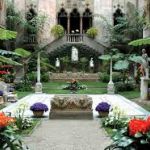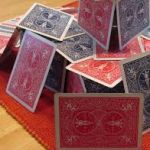Activity Overview
The Isabella Stewart Gardner Museum or Fenway Court, as the museum was known during Isabella Stewart Gardner's lifetime, is a museum in the Fenway-Kenmore neighborhood of Boston, Massachusetts, located within walking distance of the Museum of Fine Arts and near the Back Bay Fens. It is truly one of the hidden gems of Boston.
The museum was established in 1903 by Isabella Stewart Gardner (1840–1924), an American art collector, philanthropist, and patron of the arts. It is housed in a building designed to emulate a 15th-century Venetian palace, drawing particular inspiration from the Venetian Palazzo Barbaro.
When Isabella Stewart Gardner died in 1924, her will created an endowment of $1 million and outlined stipulations that her collection be permanently exhibited "for the education and enjoyment of the public forever"; and that no piece was ever to be moved, acquired or sold.
Things to See & Do
- The centerpiece of the museum is an awe-inspiring 4 story glass-ceiling courtyard with stunning seasonal plantings and sculptures. The courtyard can be viewed from all four sides of the museum and was constructed to resemble a Venetian palace that they visited frequently in Venice.
- The atmosphere of the palace is nothing short of exquisite. The first work of art you'll encounter is in the Spanish Cloister (El Jaleo by John Singer Sargent). This larger than life painting (almost 12 feet wide) is the most theatrical of Sargent's early major works.
- The Yellow Room features well-loved works by James MacNeil Whistler, John Singer Sargeant and Henri Matisse among others.
- Allow time to just wander and get lost in the opulence. The museum houses an eclectic and personal collection of fine art, furniture pieces, architecture and tapestries and it is all woven together splendidly. You can really get a sense for who she was and what she loved.
- The famous Gardner Heist of 1990 resulted in the loss of 13 priceless works of art. As nothing is ever to be removed or changed within the museum, the empty frames are still hung on the walls awaiting the return of the art. The stolen works include: Rembrandt’s Storm on the Sea of Galilee (1633), A Lady and Gentleman in Black (1633) and a Self Portrait (1634), an etching on paper; Vermeer’s The Concert (1658–1660); and Govaert Flinck’s Landscape with an Obelisk (1638); and a Chinese vase or Ku, all taken from the Dutch Room on the second floor. Also stolen from the second floor were five works on paper by the Impressionist artist Edgar Degas and a finial from the top of a pole support for a Napoleonic silk flag, both from the Short Gallery. Edouard Manet’s Chez Tortoni (1878–1880) was taken from the Blue Room on the first floor.
- Visitors can enjoy a fabulous lunch in the foyer at Cafe G. Historical recipes prepared by Isabella Gardner, nasturtium flowers,, and connections to music and art are just some of the things that inspire these menus. Tickets for general admission to the Museum are not required to visit Café G.
- There is a nifty gift shop that is loaded with really cool, unique items and books.
- In April, cascades of blossoming nasturtium vines make their brief but dramatic appearance above the Courtyard, celebrating the arrival of spring at the Gardner Museum. (Nasturtium blooms only last about three weeks.) The annual Hanging Nasturtiums display continues an annual tradition started by Isabella Stewart Gardner during the week before Easter, marking the valiant return of color to The Fenway.
Isabella Stewart Gardner Museum Insider Tips
- Enjoy free admission to the Gardner Museum on your birthday — with just your ID! Those whose birthdays fall on a Tuesday, when the museum is closed, are invited to join us the Monday before or Wednesday after.
- Anyone named Isabella gets to visit the museum for free.
- Isabella Gardner was an avid Red Sox fan. Throughout the year, visitors to the Gardner Museum wearing Red Sox paraphernalia receive $2 off admission.
- Many local libraries offer discount passes to the Isabella Stewart Gardner Museum.
- Photography is not permitted inside the palace, except on the 1st floor around the courtyard.
- Street parking is limited around the museum, however the MFA parking lot is just a few blocks away.
- Throughout the year, the museum hosts exhibitions of historic and contemporary art, as well as concerts, lectures, family and community programs, and changing courtyard displays.

 Fun games for the whole family
Fun games for the whole family Making science into family fun
Making science into family fun Giving the little ones a laugh
Giving the little ones a laugh Fun, creative activities
Fun, creative activities Exercise for the mind
Exercise for the mind Entertainment for the whole family
Entertainment for the whole family Great fun when you're stuck at home
Great fun when you're stuck at home
